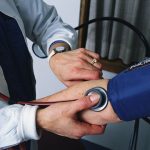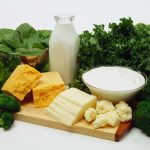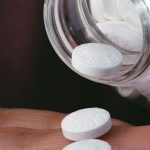(HealthDay News) — Snoring occurs when the upper airways become narrow, says Harvard Medical School. As a result, airflow is disrupted, making tissues vibrate and produce the snoring noise. To help alleviate snoring, Harvard Medical school suggests: Reduce alcohol consumption. Lose excess weight. Rinse stuffy sinuses with saline before bed. Use allergy medication or a humidifier. Sleep on your side. Quit smoking.
A little about: Weekly Gravy
All Sauce from Weekly Gravy:
Common Antidepressants May Work in Unexpected Way: Study

Many people who take the antidepressant Zoloft report feeling better. But new research suggests the drug may be treating their anxiety, rather than their depression, at least in the early weeks. Zoloft (sertraline) — and the family of similar drugs it belongs to — may actually take months to ease classic symptoms of depression, U.K. researchers found. That doesn’t mean the drugs aren’t making patients feel better relatively soon, however. That’s because Zoloft appears to have a much speedier effect on anxiety. Within six weeks the drug notably cut down on feelings of nervousness, worry and tension, said study senior author Glyn Lewis, a professor of epidemiological psychiatry at University College London. Zoloft is in a group of commonly prescribed antidepressants known as selective serotonin reuptake inhibitors, or SSRIs. Although the study focused only on Zoloft, Lewis and his team “think that results for other SSRI antidepressants, including Prozac, are likely to be very similar.” Celexa, Paxil and Lexapro are other common SSRIs. The study was conducted between 2015 and 2017. It involved 653 patients cared for at primary care facilities across four British cities. Half were assigned to receive Zoloft for 12 weeks and half got a placebo pill. Patients completed depression symptom questionnaires at two weeks, six weeks and 12 weeks. General anxiety screenings were also conducted. Symptoms of depression typically include poor… read on >
A Good Reason to Stop Squabbling at Home

Few families are able to escape squabbles completely, whether between spouses, children or other relatives. But a Danish study that looked at nearly 10,000 men and women, aged 36 to 52, warns that stressful social relations can be more than just unpleasant — they can increase your overall risk of early death. How can you live in better harmony? Though your approach might differ depending on whether the argument is with your spouse or with an uncle you see just once a year, some steps are the same. Write out what you think the squabble is about, along with your views on the subject, so that you can articulate them clearly. Add how you would like to see the issue resolved. Offer your family member this same opportunity. Agree that you will each take time to respectfully listen to the other with the goal of reaching a solution or a compromise. Make sure you both interpret any solution the same way. To move forward, it’s important that you accept the outcome and not harbor any feelings of resentment. If conflicts over specific issues happen again and again, look for a deeper, underlying cause. Remember that arguments within a family, especially between kids and parents, are normal — no fighting often means issues aren’t being addressed, not that they don’t exist. Also, airing differences of opinion… read on >
Everyday Foods for Better Blood Pressure

High blood pressure, or hypertension, is a risk factor for stroke, heart disease and other dangerous conditions, but it offers no early warning signs. That’s why it’s so important to have your pressure checked regularly. You can take preventive steps to keep it in line by getting regular exercise and by adding foods that support a healthy blood pressure to your diet. If you’ve already been diagnosed with high blood pressure, follow your doctor’s orders on medication, but know that a better diet is essential to help those medications work — it might even reduce the number of drugs you need. Healthy diets, like DASH (Dietary Approaches to Stop Hypertension), focus on lowering salt and boosting the minerals calcium and potassium through food. Vegetarians and vegans, in particular, tend to have significantly lower blood pressure and lower odds of hypertension than non-vegetarians, in part from all the extra vegetables and fruits (and their fiber) they eat. These are healthful foods everyone can enjoy more of. What other foods can help? Make sure you’re getting between 1,000 and 1,300 milligrams (mg) of calcium every day from foods like milk and yogurt. A report in the Cochrane Database of Systematic Reviews found that 1,500 mg was even more effective. The omega-3 fatty acids in flax seeds seem to be particularly good for blood pressure. Buy whole brown… read on >
Many Female Veterans Troubled by History of Sexual Assault

More than one in 10 older female veterans experienced sexual assault while on active duty, a new study shows. Doctors “caring for older women veterans should recognize the prevalence and importance of [military sexual trauma] when assessing patients’ health concerns,” said study author Dr. Carolyn Gibson. Gibson is with the San Francisco VA Health Care System. Her team notes that mandatory screening for military sexual trauma was launched in 2003, and the results indicate the issue has touched the lives of about 1 in 4 female vets. But given that most of the veterans screened were relatively young, Gibson and her team set out to conduct screening focused solely on postmenopausal vets. They found that 13% of older vets reported that they, too, had been the victim of military sexual trauma. Such trauma, said Gibson, was also “strongly associated” with a risk for depression, thoughts of suicide, and post-traumatic stress disorder (PTSD). A higher risk for sleep trouble and chronic pain was also seen. Dr. Stephanie Faubion is medical director of the North American Menopause Society (NAMS). The findings “underscore the importance of trauma screening regardless of a woman’s age,” she said in a NAMS news release. Gibson and her colleagues plan to present their findings Tuesday in Chicago at a meeting of the North American Menopause Society. More information There’s more on military sexual… read on >
What Do Hospital Cyber Attackers Want to Know About You?

Cyber attackers who target hospital databases mostly go after patient contact and financial information, not medical records, a new study finds. The data that hackers seek could lead to identity theft and financial fraud, according to investigators from Michigan State University in East Lansing, and Johns Hopkins University in Baltimore. Moreover, this is the focus of more than 70% of hospital cyber attacks, the researchers said. Reporting in a pair of studies in the Sept. 23 issue of the Annals of Internal Medicine, the study authors noted that only 2% of hospital breaches ultimately accessed patient medical records. “The major story we heard from victims was how compromised, sensitive information caused financial or reputation loss,” lead author John (Xuefeng) Jiang said in a Michigan State news release. “A criminal might file a fraudulent tax return or apply for a credit card using the Social Security number and birth dates leaked from a hospital data breach,” he added. Jiang is a professor of accounting and information systems at Michigan State. He and his colleagues reviewed more than 1,460 hospital data breaches that occurred across the United States over the last decade. Roughly 169 million patients were affected. The breaches fell into three categories of information: names and contact information; financial data; and medical records. Two million people had their personal health information stolen, amounting to just… read on >
Health Tip: Muscle Strain Risk Factors
(HealthDay News) — Pulled muscles occur frequently in athletes. Most strains respond well to nonsurgical treatments, however, some strains can result in partial or complete tears, says the American Academy of Orthopaedic Surgeons. The academy mentions these risk factors for muscle strain: Muscle tightness. Athletes should always stretch. Muscle imbalance, which can occur during high-speed activities. Poor conditioning. Weak muscles are less able to cope with stress. Muscle fatigue, which makes muscles more susceptible to injury. Old age or adolescence. Athletes who participate in football, soccer, basketball, running, sprinting and dancing are especially at risk and should take extra precautions, the academy says.
Health Tip: Preventing Bronchitis
(HealthDay News) — Bronchitis is an inflammation of the bronchial tube lining, says Mayo Clinic. People who have bronchitis often cough up thick, discolored mucus. Though complications are rare, bronchitis can lead to pneumonia in some people. To help prevent bronchitis, Mayo suggests: Avoid cigarette smoke. Get vaccinated for flu. Wash your hands regularly. Mayo also reminds people to wear a surgical mask if they have chronic obstructive pulmonary disease.
Lighten Up Your Favorite Mac ‘N’ Cheese

It’s hard to beat the comfort quotient of a hot, bubbling dish of macaroni and cheese, but the fat and calorie overload can be a health disaster. Here’s how to make a lighter version with all the taste intact. Start by choosing a whole grain pasta such as spelt or a gluten-free quinoa pasta. These typically have double the fiber of processed white pasta, plus iron and important B vitamins. Besides cashing in on more nutrients, quinoa pasta is lighter in color than whole-wheat varieties, so the finicky eaters in your house won’t even notice the swap. This recipe gets a flavor boost from extra garlic and uses squash to replace part of the cheese. Squash boosts the vitamin A content of the dish and makes it thick and creamy without having to use a white flour-based roux. You can roast it fresh or buy it precooked and frozen. Lighter Mac ‘N’ Cheese 1 pound macaroni-shaped whole-grain or quinoa pasta 2 teaspoons olive oil 2 cloves garlic, minced 1/2 teaspoon garlic salt 1/4 teaspoon turmeric 1/8 teaspoon black pepper 1 cup skim milk 1/2 cup pureed squash (made with any hard squash such as acorn or butternut) 1-1/2 cups cheddar cheese, shredded Fill a large stockpot with water and bring to a boil. Cook the pasta according to the package instructions. Drain and set aside.… read on >
Can Aspirin Help Tackle Some Cancers?

MONDAY, Sept. 23, 2019 (HealthDay News) — Low-dose aspirin may improve survival odds for patients battling head/neck and lung cancer, two new studies suggest. The first reviewed data on 460 patients with head and neck squamous cell carcinoma (HNSCC) or early stage non-small cell lung cancer (NSCLC). That study concluded that taking a non-steroidal anti-inflammatory drug such as low-dose aspirin, along with standard radiation therapy or chemotherapy, increased five-year survival by 8%. The second study focused on 164 patients who underwent a precise, high-dose form of radiation for NSCLC. Of those, 57% who also took aspirin reached the two-year survival mark, compared to 48% of others. Both studies were led by Dr. Anurag Singh, a professor of oncology at Roswell Park Comprehensive Cancer Center in Buffalo, N.Y. Both studies were presented earlier this month at the annual meeting of the American Society for Therapeutic Radiation Oncology in Chicago. Research presented at meetings is typically considered preliminary until published in a peer-reviewed journal. “We were especially interested to see that these patients lived longer even though the anti-inflammatory drugs did not seem to have an impact on the effectiveness of cancer treatment,” said a co-author of the first study, Dr. Austin Iovoli, who is serving a residency at Roswell Park’s Department of Supportive Care. Dr. Gregory Hermann, a resident physician at Roswell Park, was part of… read on >









